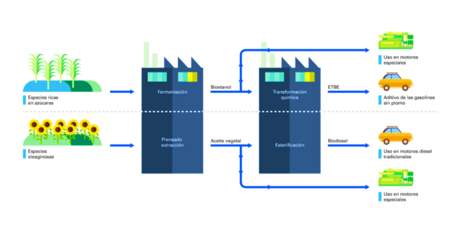Alejandro Iza Zurita – Master’s degree student
We live in a world where most of the materials we use come from petroleum and other non-renewable resources. These materials, although useful, have many disadvantages: they have a long time to decompose (some take more than 100 years), release microplastics when they interact with the environment, or emit harmful chemicals over time. However, with the advancement of technology and bioengineering, new alternatives based on the bio-prospecting of micro-organisms have been developed. In this context, micropatals emerge, which are mainly composed of mycelium and other organic elements such as wood, cardboard, paper and sawdust.
Properties and applications
One of the most attractive aspects of micomateriales is its versatility. These materials can be manipulated through selection of the fungus, substrate and stress conditions, adapting to a wide variety of applications:
- Construction: Micomaterials have the potential to replace bricks and other conventional building materials. They are lightweight, flame-retardant and most importantly biodegradable, reducing the environmental impact of construction waste. In addition, their ability to thermally insulate them makes them useful for the creation of sustainable insulation panels.
- Fashion: The fashion industry is also exploring the use of micomaterials. Mycelium leather is an ecological alternative to animal leather, which not only avoids animal suffering, but also generates a much more environmentally friendly product, requiring less water and energy in its production.
- Packaging: One of the most popular uses of micomaterials is in the field of packaging. Companies like Ecovative Design have developed mycelium-based packaging that can replace polystyrene, a non-biodegradable material responsible for large amounts of plastic waste globally.
- Insulation: Mycelium has the ability to act as an excellent acoustic and thermal insulator. This property makes it an ideal material for building sustainable homes or devices that require temperature or noise control.
Manufacturing
The manufacturing process of micropiles is relatively simple and has a low environmental impact. The mycelium is grown in moulds with organic substrates such as straw or agricultural waste. As it grows, it branches out into a dense network that takes the shape of the mold, giving it solid and durable structural characteristics.
When the mycelium has reached the desired size and density, its growth is stopped by heat, which solidifies its structure. This process, besides being energy efficient compared to the production of plastics or cement, does not require toxic additives.
Current challenges
Although micomaterials are gaining ground, they still face several challenges. One of the main ones is scalability. While they are already used for packaging creation and some construction prototypes, producing micro-materials on a large scale remains a technical and logistical challenge. Current research is seeking to optimize its growth and further reduce production costs.
As technology advances, we are likely to see innovations that allow micomaterials to compete more effectively with conventional materials. There are startups and laboratories exploring innovative applications, from biodegradable solar panels to medical prostheses made of mycelium.
Conclusion
Micomaterials represent an exciting step forward towards a more sustainable future. By harnessing the power of mycelium, we are not only creating materials with unique properties, but also fostering a form of production that works in harmony with nature rather than exploiting it.
The large-scale implementation of micomaterials could transform entire industries, from packaging to construction, reducing our dependence on non-renewable resources and decreasing negative environmental impact. Undoubtedly, the kingdom of mushrooms offers us a window to a greener future.
Bibliography
- “We grow better materials”. We grow better materials. Accedido el 25 de octubre de 2024. [En línea]. Disponible: https://ecovative.com/
- “MUSH bio design”. MUSH Bio Design. Accedido el 25 de octubre de 2024. [En línea]. Disponible: https://mushbiodesign.com/
- N. Verma, J. Satya Eswari y C. Mahapatra, “Green sustainable biocomposites: Substitute to plastics with innovative fungal mycelium based biomaterial”, J. Environmental Chem. Eng., p. 110396, junio de 2023. Accedido el 25 de octubre de 2024. [En línea]. Disponible: https://doi.org/10.1016/j.jece.2023.110396
- L. A. Ballen Sierra et al., “Current situation and future perspectives for the use of fungi in the biomaterial industry and proposal for a new classification of fungal-derived materials”, PeerJ Mater. Sci., vol. 5, agosto de 2023, art. n.º e31. Accedido el 25 de octubre de 2024. [En línea]. Disponible: https://doi.org/10.7717/peerj-matsci.31
- Sangeeta, D. Sharma, S. Ramniwas, R. Mugabi, J. Uddin y G. A. Nayik, “Revolutionizing Mushroom processing: Innovative techniques and technologies”, Food Chem., vol. 23, p. 101774, octubre de 2024. Accedido el 25 de octubre de 2024. [En línea]. Disponible: https://doi.org/10.1016/j.fochx.2024.101774




